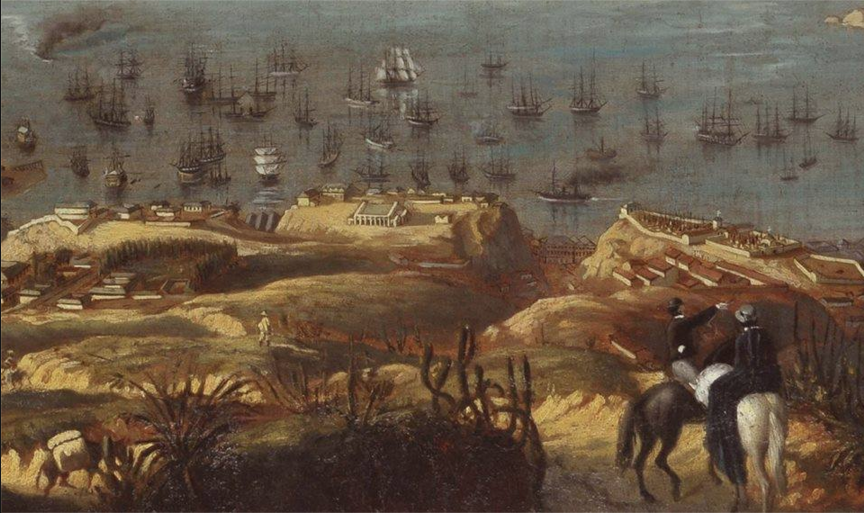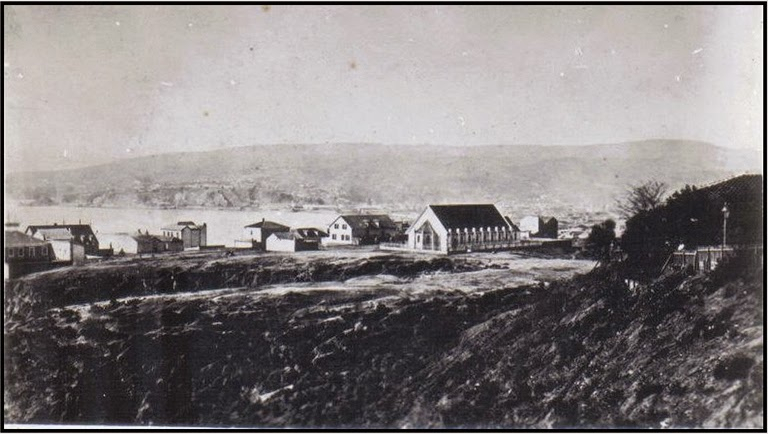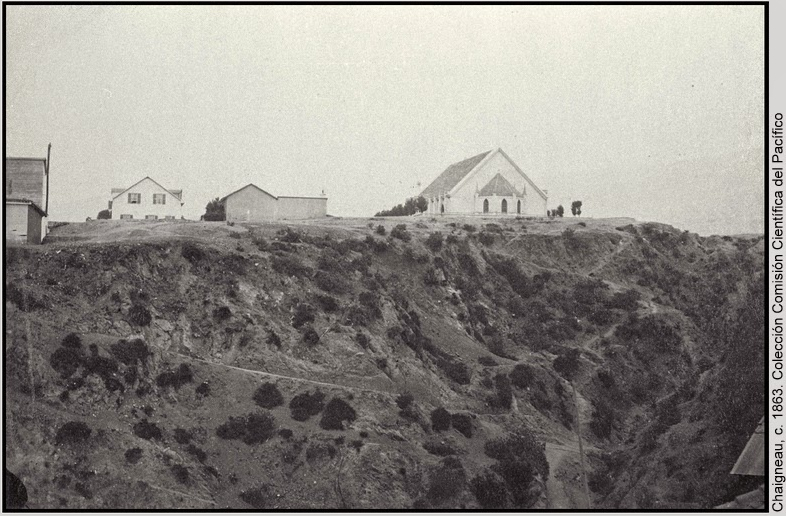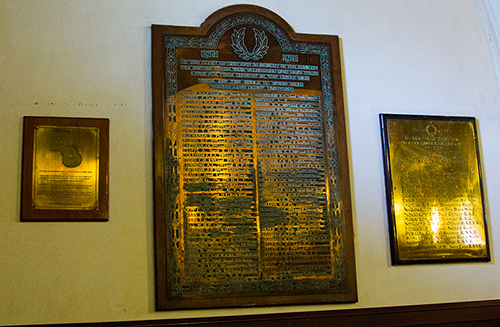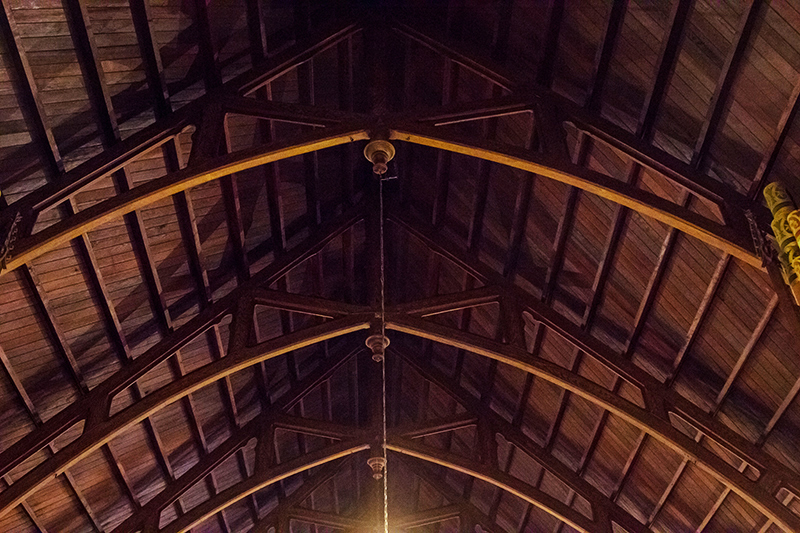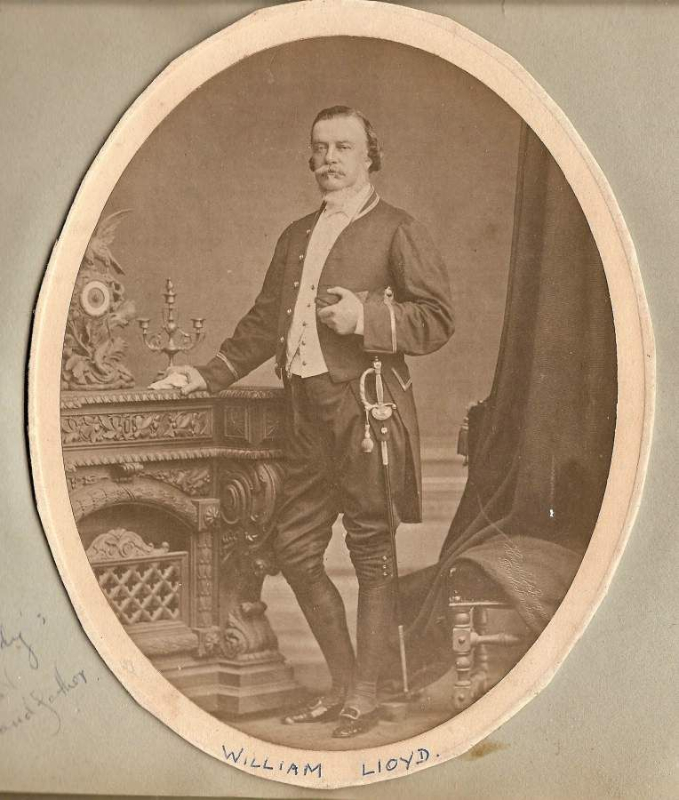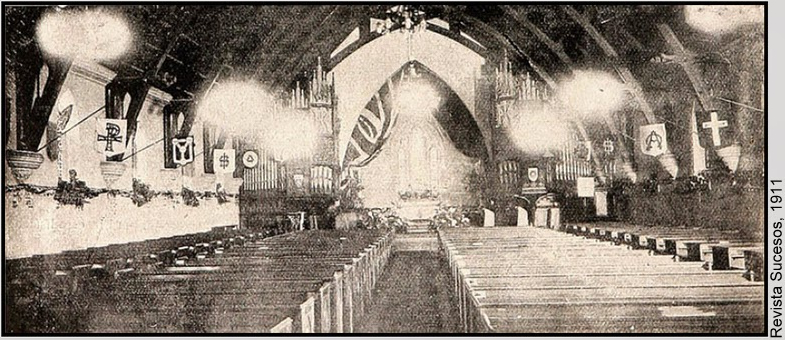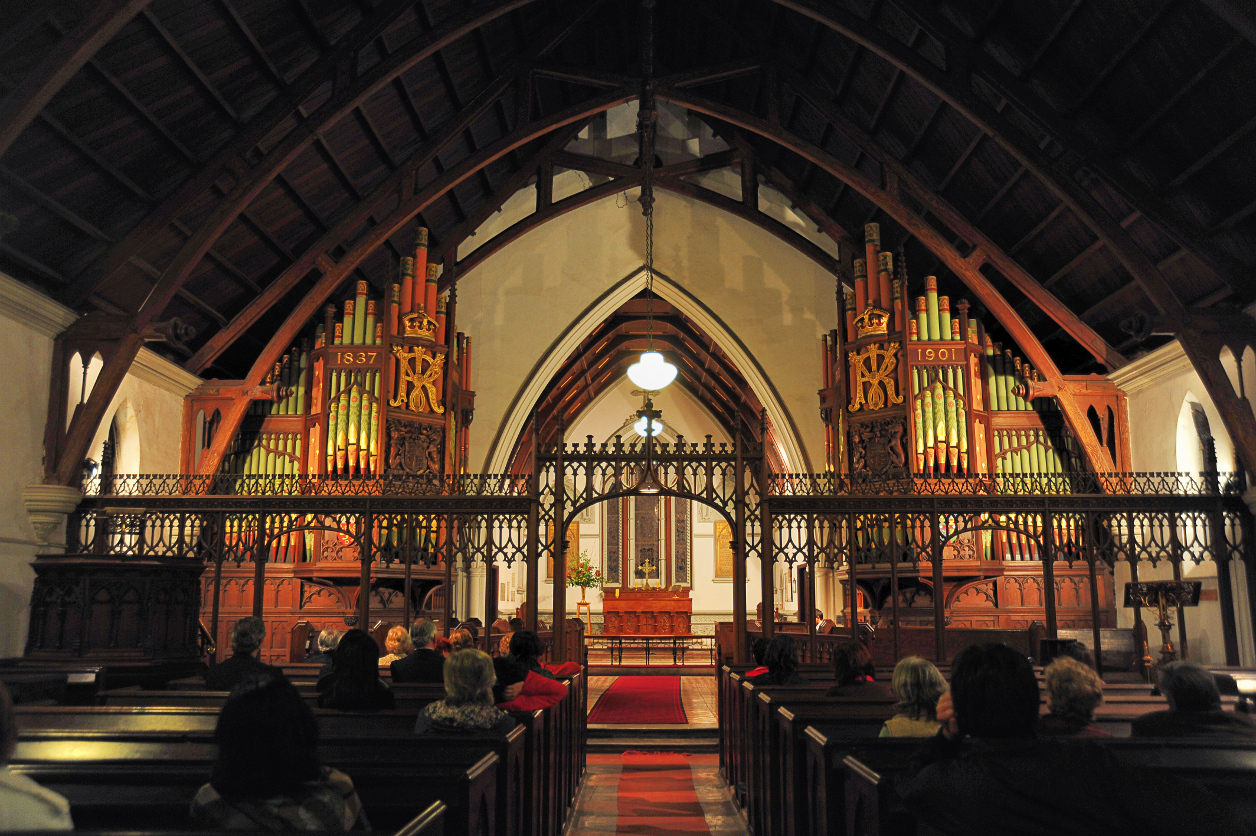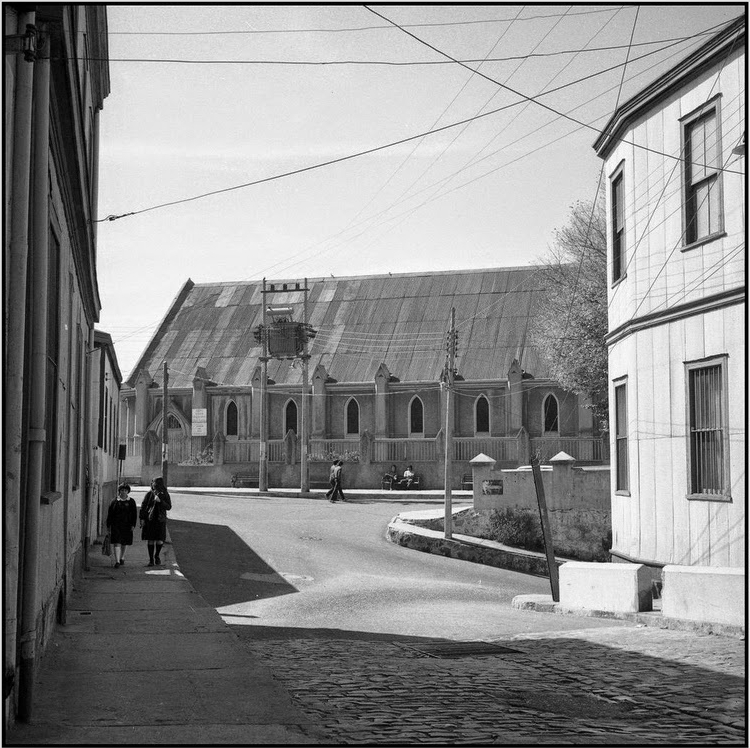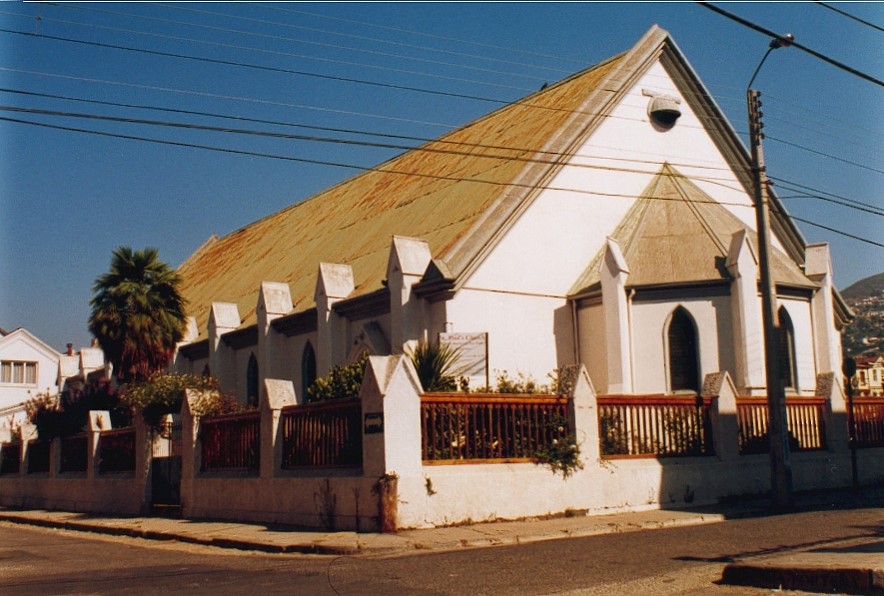The communion table behind the railings is carved with the symbols of
the alpha and omega, the wheat and the vine, and a central cross.

On the wall behind it are the Ten Commandments from Exodus 20, painted
on either side of the main windows.
The first four commandments speak
of our relationship to Almighty God, whilst the last six speak of our
relationship to each other.
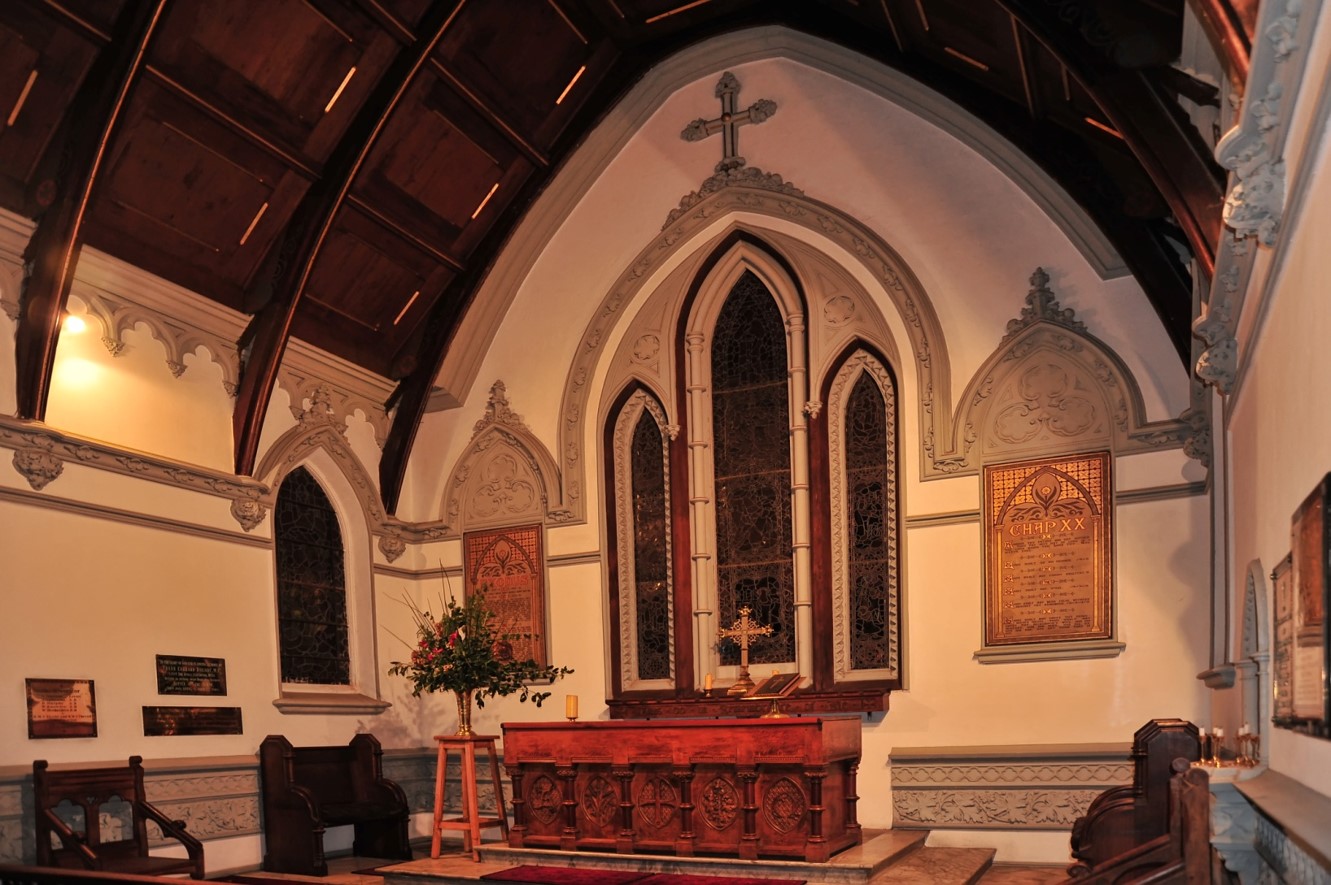
.jpg)
.jpg)
